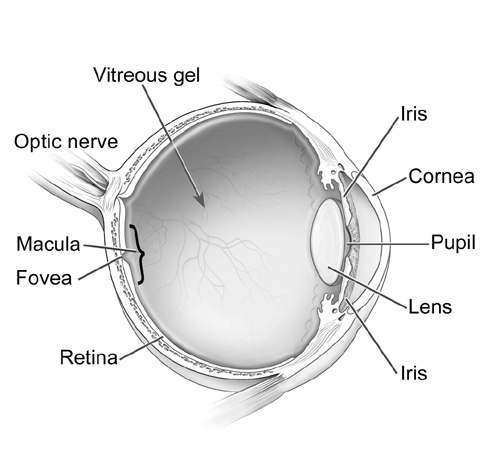Unit 6: Sensation
| Sensation: The
process by which sensory receptors (in eye, ear, etc.) receive and are
stimulated by stimulus energies from the environment. Perception: The process of organizing and interpreting sensory information, enabling us to recognize meaningful objects and events. Bottom-up-processing: Analysis that begins with the sense receptors and works up to the brain's processing of the information. Top-down-processing: Information processing guided by higher-level processes, such as our expectations. Absolute Threshold: The minimum stimulation needed to detect a particular stimulus 50% of the time. Signal Detection Theory: Predicts how and when we detect faint stimuli (dependent on experience, expectations, motivation & fatigue. Subliminal Stimulation: Stimulation below one's threshold of conscious awareness. Research reveals a subtle, fleeting effect on thinking, but no effect on behavior. Difference Threshold: The minimum difference between two stimuli required for detection 50% of the time. It is also called the just noticeable difference or JND. It is based on Weber's Law: The difference threshold is in proportion to the strength of the original stimulus. Sensory Adaptation: Our diminishing sensitivity to unchanging stimuli. Selective Attention: The focusing of attention on specific stimuli, while ignoring other stimuli (e.g., the cocktail party effect). Transduction: The transforming of stimulus energies (i.e., light waves, sound waves) into neural impulses. VISION & LIGHT ENERGY Wavelength: Distance from the peak of one light or sound wave to the next. Wavelength determines HUE or color in vision and Pitch in audition. Shorter wavelengths are bluish in color, while longer wavelengths are reddish. Amplitude: The height of a light or sound wave. It determines brightness in vision and loudness in hearing. |
THE EYE
Pupil: Adjustable opening in the center of the eye through which light passes. Iris: A ring of muscle tissue that forms the colored part of the eye. It controls the size of the pupil Lens: The transparent structure behind the pupil that changes shape (called accommodation) to help focus images on the retina. Visual Acuity: The sharpness of vision. Nearsightedness: Can see nearby objects more clearly because distant object focus in front of the retina (eyeball may be too long). Farsightedness: Can see distant objects more clearly because nearby objects focus behind the retina (eyeball may be too short). Rods & Cones: The receptor cells for vision. Receptor cells are specialized neurons designed, in this case, to transduce light energy into neural impulses. Rods: detect black, white, & grey. Found mainly in the periphery of the retina. More than one rod connects to each bipolar cell. Thus, less light energy is necessary for them to cause the bipolar cells to fire. Necessary for NIGHT VISION & PERIPHERAL VISION. Cones: Found mainly in the center (fovea) of the retina. Necessary for COLOR VISION and VISUAL ACUITY. NEXT PAGE |